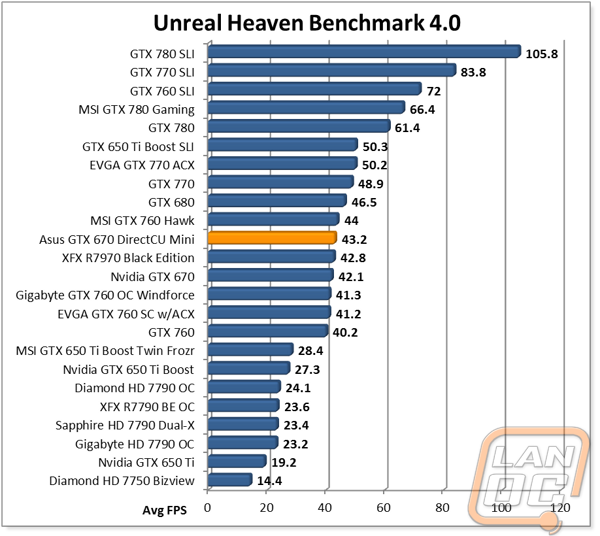Synthetic Benchmarks
While synthetic benchmarks aren’t a great representation of actual game performance you might see. They are a great way to compare the performance between cards without having to worry about small inconsistency’s that can happen in hand run benchmarks especially. Not only that but there is less of a worry of tuning that favors specific manufactures, something we see a lot with games. This is why the first benchmarks I look at are our synthetic benchmarks, especially in this case. I want to see how well the GTX 670 DirectCU Mini performs up against the reference GTX 670 as well as all of the cards that have come out in the past year. In our regular 3DMark Fire Strike benchmark the GTX 670 DirectCU Mini came in right in between all of our GTX 760’s with the only card that out performed it being the heavily overclocked Hawk card from MSI. As for the GTX 670 reference card the GTX 670 DirectCU Mini pulled ahead of it by a fairly good number. Results from the extreme Fire Strike benchmark weren’t as favoring though, in fact the GTX 670 DirectCU Mini performed slower than the reference card by a large margin, I’m not sure if this is related to driver changes or if the extreme benchmark overheated the GTX 670 DirectCU Mini. Hopefully we will get more answers in the rest of our testing.
3DMark 11 results came in right in line with what we saw in the first Fire Strike benchmark even when I turned the setting up too high. It’s looking more like the Fire Strike Extreme results may have been flawed more than anything. The Unreal Heaven Benchmark results were more of the same as well. The heavily overclocked Hawk card did outperform the GTX 670 DirectCU Mini, but only slightly while the performance over the reference GTX 670 was more than noticeable.







